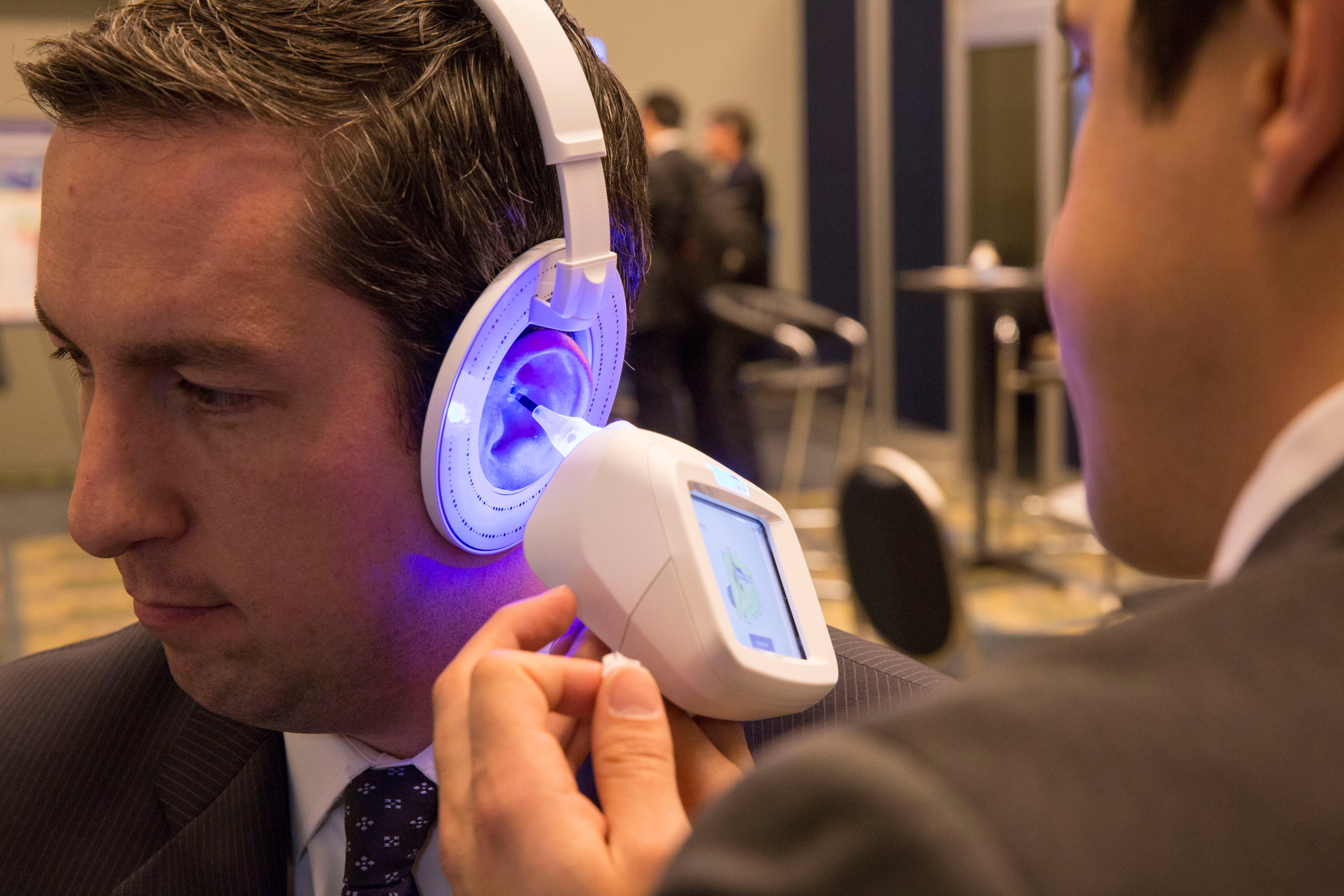Most sailors don't wear foamies right, and that's leading to preventable hearing loss. Now, the Navy's research branch is eyeing a 3-D printer that makes custom ear plugs to fit every sailors' ears.
United Sciences, with funding from the Office of Naval Research, is using a high-resolution laser scanner to provide a 3-D image of the outer ear and ear canal. A 3-D printer then produces a hard plastic shell of that image, which is later filled with soft silicone. When the shell is removed, the sailor has comfortable, custom hearing protection. The whole process takes about one hour.
Technology used to precisely measure the plethora of holes in an aircraft is now used to produce comfortable, custom hearing protection that can hold some super cool, secret squirrel technology to boot.
The custom aspect is critical, as studies have shown that only 7 percent of troops properly wear the common foam earplugs common on flight decks and engineering plants, said Samuel Kellett, CEO of United Sciences. His ear plugs do not result in expanding pressure against the ear canal, and last upwards of two years.
"With this device there is always consistency, because it can only be worn one way," he said.
This technology may not be as sexy as autonomous helicopters and firefighting robots, but it certainly has the attention of the bean counters and docs. medical community. Disability claims for hearing loss run $1.4 billion annually, according to data from the Veterans Administration. That does not include the cost of care. The VA also buys 600,000 hearing aids every year. That is nearly one-quarter of total U.S. sales.

Karol Hatzilias, Chief Science Officer for United Sciences demonstrates on William Bartko, right, from Office of Naval Research, their in-ear scanning solution that scans and creates a 3D model of a person's ear that is then used to create hearing protection/earphones that will fit perfectly using a 3-D printer at the Naval Future Force Science and Technology Expo at the Washington Convention Center on Feb. 5, 2015.
Photo Credit: Alan Lessig/Staff
Improved hearing protection is only the start doesn't even scratch the surface of what this technology can provide, according to Karol Hatzilias, chief science officer at United Sciences. He showed Navy Times a digital signal processor, smaller than a dime, which boasts a Bluetooth connection and easily fits into the silicone earpiece. Three bronze strips stretch about one inch from the chip. One is a speaker directed at the ear canal that offers clear communication even when surrounded by deafening noise. Another is a microphone that provides situational awareness and can amplify or dampen specific signals. The third is a microphone that enables the user to communicate at a whisper, if necessary.
Wearing these on a flight deck, for example, could radically improve communications and safety between aircrews, handlers and pilots.
And the people on the receiving end know more than what the sailor is saying. The ear piece can hold biomedical sensors that pick up a wide array of cognitive activity. This can register everything from stress levels and sleep deprivation to concussions. Such insight is a primary focus of scientists who look to make the most of warrior resiliency.
"The ear is a physiological playground," Kellett said. "Hearing protection is just the beginning," Kellett said.





